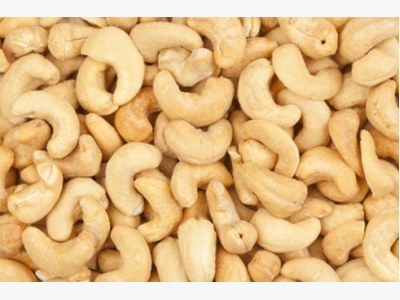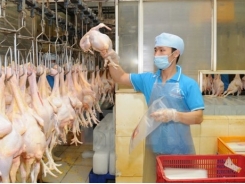Cashew nut segment lowers expectations for export growth

The global demand over the past seven years for the ever-popular kidney-shaped cashew nut has climbed to roughly 150% its value in 2010 and is now estimated at US$5.2 billion, industry data show.
However, unseasonal rains in Vietnam, the largest exporting country of cashews, earlier this year has wreaked havoc on the projected annual harvest, said Le Van Duc of the Ministry of Agriculture and Rural Development.
Mr Duc who is the deputy head of the Ministry Department of Crop Production told reporters that yields are forecast to drop by 17% in the province of Binh Phuoc, which is the largest producing region in the country, accounting for more than half of the national annual production.
Meanwhile production is down a whopping 15% in the province of Ba Ria-Vung Tau and by an astonishing 50% in Lam Dong, which are two other high production regions of the country.
The damage caused by the rains spell nothing but trouble for the segment, Mr Duc noted, adding that the total crop forecast for 2017 has been downgraded by 52,000 metric tons compared to 2016 to just 252,000 metric tons.
Global cashew consumption in 2014, the most-recent year for which industry data is available, reached a record 716,682 metric tons, so a 52,000-metric ton shortfall is significant— as it likely represents a shortfall of roughly 7% of the global harvest for 2017.
Nguyen Duc Thanh, chair of the Vietnam Cashew Association, said the unexpected reduction may prevent the national economy from reaching the gross domestic product target set by the government for the year.
To ensure sustainable development for the segment, Mr Thanh suggested that the government expand the number of hectares under cultivation from the current 340,000 to 400,000 for next year.
However other experts have said that the cashew segment in Vietnam isn’t completely dependent upon local farmers and expanding the number of hectares under cultivation could prove counterproductive.
About two thirds of the nuts processed in Vietnam are grown somewhere else, principally in West Africa, which accounted for about 46% of the global cashew production in 2016, and most of those nuts were shipped to either Vietnam, India or Brazil for further processing.
Processing is labour intensive. Trees produce an oval-shaped fruit called the cashew apple with a single nut on the outside. Once harvested, the shells are softened by steam and then cracked by hand.
The kernels are dried, peeled and sorted by size and quality. Workers often coat their hands with oil to limit exposure to skin-irritating toxins in the fruit that is very like poison ivy, oak, or sumac.
So, even with a smaller domestic crop, Vietnam may import about 800,000 metric tons of raw nuts in the shell this year, more than twice the amount grown locally, according to Mr Thanh of the Association.
It probably makes better sense for Vietnam to cut production by 60,000 hectares for 2018 and let prices rise and rely more on import reexport operations and make a higher rate of earnings on lesser sales amounts.
Vietnamese notoriously focus on the top line sales figures and ignore bottom line earnings. With total global demand capped it makes little economic sense to continually produce more, in turn putting downward pressure on prices leaving the farmers overall with less earnings.
A better strategy might be to focus on higher earnings by producing a higher-quality cashew nut, streamlining the production process through retooling with the latest modern technologies and innovative cost reduction.
Nguyen Trung Anh, director of the research and development centre of PAN Group, a leading regional agriculture and food group in Vietnam, agreed. He also suggested the segment pay more attention to improved cultivation and technological improvement and less on expanded cultivation areas.
It’s now more important than ever for farmers and processors to follow clean and environmentally friendly production practices to produce high quality products consistent with international standards than it is to broaden the outdated low earning traditional cultivation methods.
Related news
Tools

Phối trộn thức ăn chăn nuôi

Pha dung dịch thủy canh

Định mức cho tôm ăn

Phối trộn phân bón NPK

Xác định tỷ lệ tôm sống

Chuyển đổi đơn vị phân bón

Xác định công suất sục khí

Chuyển đổi đơn vị tôm

Tính diện tích nhà kính

Tính thể tích ao



 Vietnam to attend agricultural technology expo in India
Vietnam to attend agricultural technology expo in India  VN seeks to boost livestock product exports
VN seeks to boost livestock product exports